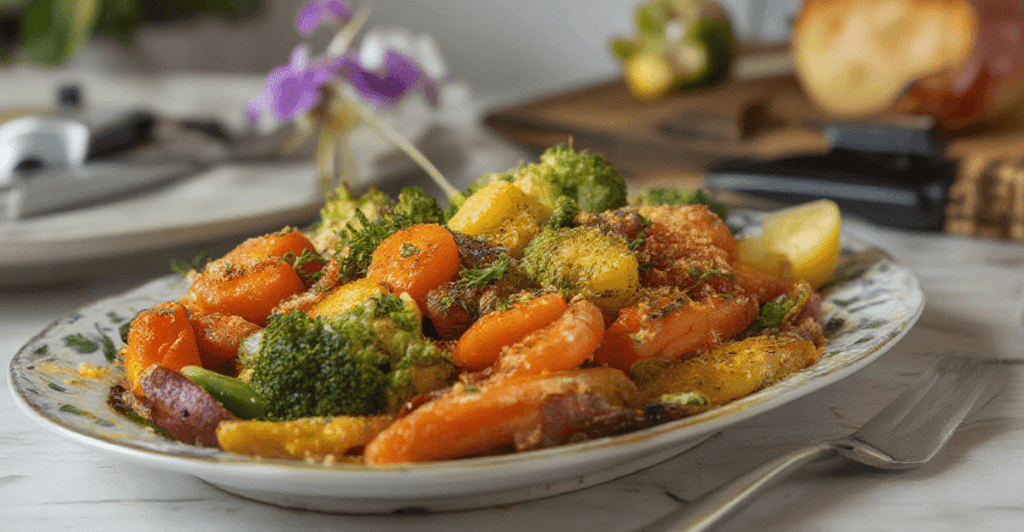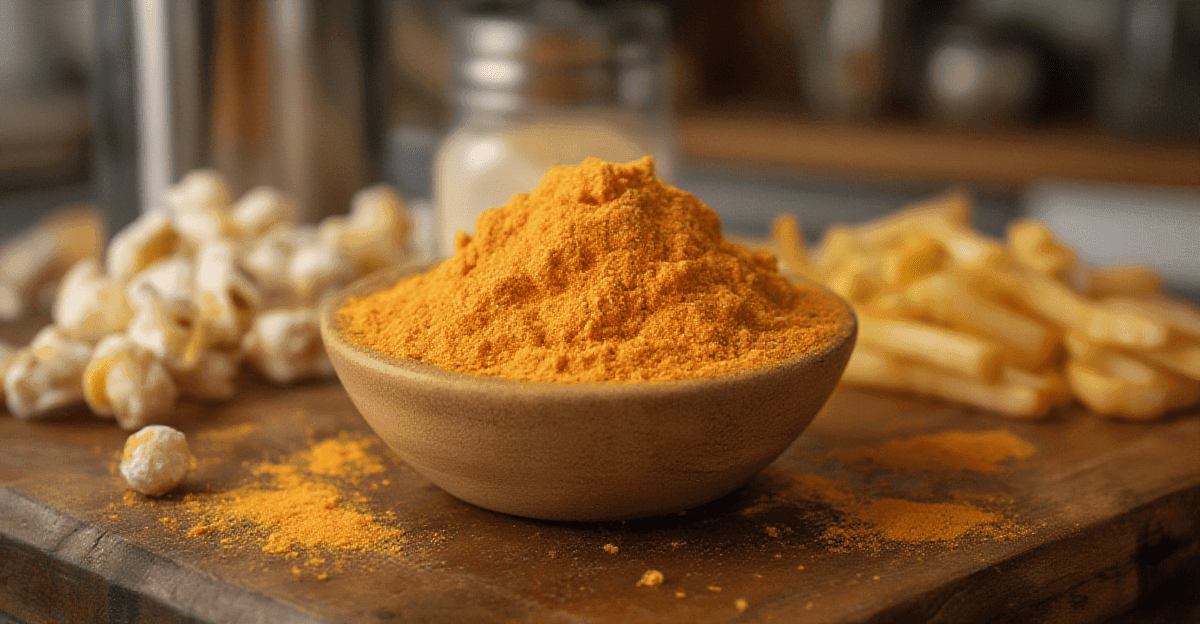Cheese seasoning powder is a culinary gem that brings a rich, cheesy flavor to a wide variety of dishes. Loved for its versatility, it has become a staple in kitchens worldwide. Whether you are a gourmet chef or a home cook, cheese powder opens up endless possibilities to enhance and transform everyday meals.
Introduction
Cheese seasoning powder is a dehydrated, shelf-stable form of cheese that can be used as a flavor enhancer. It’s perfect for those moments when you want the taste of cheese without needing to store or grate fresh cheese. From snacks like popcorn and chips to complex recipes like cheesy pasta sauces, this seasoning works like magic.
In this article, we’ll explore practical and creative ways to use cheese seasoning powder, provide tips for getting the most out of its flavor, and answer common questions about this beloved ingredient. Let’s dive into the world of cheese powder and uncover its full potential!
Common Applications of Cheese Seasoning Powder
Cheese seasoning powder is incredibly versatile. It can add a cheesy twist to snacks, meals, and even some unexpected dishes. Let’s take a closer look at the most common ways to use this flavorful powder.
Using Cheese Powder in Snacks
One of the easiest and most popular uses for cheese seasoning powder is to sprinkle it on snacks. It gives an instant flavor boost and makes simple treats feel gourmet.
Popcorn: A Classic Pairing
If you love popcorn, you’ll know that cheese powder is one of the best toppings you can add. After popping your popcorn, simply toss it with melted butter or a little bit of oil. Then sprinkle the cheese seasoning powder evenly over the popcorn. Toss again to make sure every kernel is coated. The result? A cheesy, savory snack perfect for movie nights.
Chips and Crackers: Enhancing Flavors
Cheese seasoning powder is also perfect for spicing up plain chips or crackers. Lightly brush them with olive oil, sprinkle the powder, and bake for a few minutes to lock in the flavor. You can even use it on store-bought snacks to add an extra layer of cheesy deliciousness.
Adding Cheese Powder to Meals
Cheese powder isn’t just for snacks—it’s a fantastic addition to cooked dishes too.
Pasta Dishes: Extra Cheesy Goodness
For creamy pasta dishes, cheese powder is a game-changer. Stir it into your Alfredo or mac and cheese sauce for a richer, cheesier flavor. Even a basic pasta with butter can become gourmet with a sprinkle of cheese powder.
Baked Dishes: Enhancing the Crust
You can also use cheese powder to create a golden, cheesy crust on baked dishes like casseroles, lasagnas, or baked potatoes. Simply mix the cheese powder with breadcrumbs and sprinkle it on top before baking.
Creative Uses for Cheese Powder
If you like to experiment, cheese seasoning powder offers endless possibilities.
Seasoning Vegetables
Roasted vegetables like broccoli, cauliflower, or potatoes taste amazing with a little cheese powder. Toss the veggies with olive oil, season with cheese powder, and roast until golden. It’s a simple way to turn plain veggies into a flavorful side dish.
Making Dips and Spreads
Cheese powder can also be mixed into cream cheese, sour cream, or Greek yogurt to make quick and easy dips. Add garlic or onion powder for extra flavor. These cheesy spreads are perfect for parties or as an appetizer with crackers and veggies.
How to Properly Use Cheese Seasoning Powder

Using cheese seasoning powder correctly ensures that your dishes taste great and have a consistent flavor. Let’s explore some easy tips and tricks to make the most out of it.
Guidelines for Even Seasoning
When adding cheese powder to snacks or dishes, it’s important to spread it evenly. Uneven seasoning can lead to some bites being too salty or cheesy, while others might lack flavor.
Start with a Base
Always add a light coating of oil, butter, or another moist ingredient to your food before sprinkling the powder. This helps the powder stick to the surface, ensuring every bite is flavorful. For example, drizzle a small amount of melted butter on popcorn or fries, then toss with the cheese powder.
Use a Shaker or Sieve
To prevent clumps and ensure an even distribution, use a shaker or a fine sieve to sprinkle the cheese powder. This works especially well for snacks like popcorn, chips, or roasted nuts.
Combining Cheese Powder with Other Seasonings
Cheese seasoning powder can stand alone, but it also pairs well with other flavors. By combining it with different spices, you can create unique seasoning blends that elevate your dishes.
Sweet and Savory Combos
For a surprising twist, try mixing cheese powder with a little bit of sugar and cinnamon for popcorn or roasted nuts. This creates a sweet-and-savory flavor that’s hard to resist.
Spicy Mixes
If you love heat, combine cheese powder with chili powder, cayenne pepper, or paprika. This works beautifully on fries, roasted vegetables, or even in dips.
Mixing Cheese Powder with Liquid Ingredients
Cheese powder can also be used in liquid-based recipes to create creamy, cheesy sauces or dressings.
Making a Cheese Sauce
To make a quick cheese sauce, dissolve the powder in warm milk or cream. Start with small amounts of powder, stirring constantly to prevent lumps, and adjust to your taste. This sauce is great for pouring over pasta, nachos, or baked vegetables.
Adding to Soups and Broths
Cheese powder can also enhance soups and broths. Stir a teaspoon or two into creamy soups like potato or broccoli cheddar for an extra cheesy kick.
Tips for Optimal Flavor
Lastly, let’s look at some tips to make sure you get the best flavor out of your cheese powder.
Use the Right Amount
It’s easy to go overboard with cheese powder, which can make your dish too salty or overpowering. Start with a small amount, taste as you go, and add more gradually.
Pair with Complementary Spices
Cheese powder shines when paired with complementary flavors. For example, a dash of garlic or onion powder can enhance its savoriness, while herbs like parsley or basil add a fresh touch.
DIY Cheese Powder Recipes
Making your own cheese powder at home can be a fun and rewarding experience. It allows you to customize the flavor to suit your taste and avoid unnecessary additives found in some store-bought options.
Homemade Cheese Seasoning Blends
Creating a cheese seasoning blend is as simple as mixing cheese powder with a few pantry spices. Here’s a quick recipe to try:
Simple Cheese Seasoning Blend
- Ingredients:
- 1 cup of cheese powder (store-bought or homemade)
- 1 teaspoon garlic powder
- 1 teaspoon paprika
- ½ teaspoon salt
- ½ teaspoon black pepper
- Instructions:
- Combine all ingredients in a bowl and mix well.
- Store the blend in an airtight container.
- Use it as a topping for popcorn, fries, or roasted veggies.
This blend adds depth and a slightly smoky flavor to your snacks and dishes.
Spicy Cheese Blend
If you love a little heat, try adding cayenne pepper or red chili flakes to your cheese powder. This is great for chips, roasted nuts, or even on scrambled eggs.
Adjusting Flavor Profiles
Homemade cheese powder gives you full control over the taste. Here are some ideas:
- For a richer flavor, mix in a bit of Parmesan or Romano cheese powder.
- For a lighter option, reduce the salt or use a low-sodium cheese powder.
- To make it kid-friendly, keep the seasonings mild by omitting spices like chili or paprika.
Storing Cheese Powder Effectively
Proper storage is key to keeping your cheese powder fresh and flavorful for a long time. Let’s look at some simple tips.
Avoiding Moisture
Cheese powder is highly absorbent, meaning it can clump or spoil if exposed to moisture.
Use Airtight Containers
Store your cheese powder in a tightly sealed container, such as a glass jar or a plastic container with a secure lid. This keeps air and humidity out, preserving its texture and flavor.
Keep It Dry
Always use a dry spoon when scooping out cheese powder. Even a small amount of moisture can cause the powder to clump.
Maximizing Shelf Life
Cheese powder can last for months when stored properly.
Cool, Dark Places
Store your cheese powder in a cool, dark pantry or cupboard, away from sunlight and heat. This prevents the oils in the cheese from going rancid.
Refrigeration Option
If you live in a humid climate, you can refrigerate your cheese powder to extend its shelf life. Just make sure it’s sealed well to avoid absorbing odors from other foods.
Label and Date
It’s a good idea to label your container with the date of purchase or when you made the cheese powder. This helps you keep track of its freshness and avoid using expired powder.
Health and Nutritional Aspects

Cheese seasoning powder doesn’t just add flavor—it also contains nutrients found in cheese. However, it’s important to use it wisely to enjoy its benefits without overdoing it.
Nutritional Value of Cheese Powder
Cheese powder is made by dehydrating cheese, so it keeps many of the nutrients found in fresh cheese. Here’s what you can typically find in cheese powder:
Calcium and Protein
Like regular cheese, cheese powder is a good source of calcium, which helps keep your bones strong. It also contains protein, which is essential for muscle growth and repair.
Vitamins and Minerals
Cheese powder may also have small amounts of important vitamins like vitamin A and minerals like phosphorus, which support overall health.
Things to Watch Out For
While cheese powder has nutritional benefits, there are a few things to be mindful of when using it in your meals.
Sodium Content
Cheese powder can be high in sodium, which means too much of it may not be ideal for people watching their salt intake. To avoid overdoing it, use small amounts and balance it with other low-sodium ingredients.
Added Ingredients
Some store-bought cheese powders include preservatives or artificial flavorings. If you’re trying to eat clean, look for brands that use natural ingredients or make your own cheese powder at home.
Tips for Using Cheese Powder in Moderation
You don’t need to use a lot of cheese powder to make your food taste great. Here’s how to enjoy it responsibly:
Use It Sparingly
A little cheese powder goes a long way. Start with a small sprinkle and add more only if needed. This keeps your meals tasty without overloading on salt or calories.
Pair It with Healthy Foods
Balance the richness of cheese powder by pairing it with healthier options. For example, sprinkle it on air-popped popcorn or roasted vegetables instead of fried snacks.
Heading 3: Who Can Enjoy Cheese Powder?
Cheese powder is generally safe for most people to eat, but it’s always a good idea to check the label if you have specific dietary restrictions.
Is It Vegetarian?
Most cheese powders are made with real cheese, but some may contain animal-derived enzymes. If you’re vegetarian, check the packaging to make sure it’s suitable for your diet.
Is It Gluten-Free?
Many cheese powders are naturally gluten-free, but some brands might include additives with gluten. Always double-check the label if you have gluten sensitivities.
FAQs
What is the one trick Michael Symon uses to make perfect scalloped potatoes?
Michael Symon, a renowned chef, emphasizes the importance of simplicity and proper preparation when making scalloped potatoes. His “one trick” is to use a starchy base, like heavy cream or a mixture of cream and milk, infused with garlic, herbs, and spices. This creates a rich, flavorful sauce that coats the potatoes beautifully.
Additionally, he advises:
- Using Yukon Gold potatoes: These hold their shape well and have a creamy texture.
- Slicing potatoes uniformly: Thin, even slices ensure that the potatoes cook evenly. A mandoline slicer can help achieve perfect thickness.
- Layering with care: Symon layers potatoes with the creamy sauce, ensuring each layer is coated for maximum flavor.
How do you make Paula Deen’s scalloped potatoes?
Paula Deen’s scalloped potatoes recipe is a classic comfort food favorite. Here’s a simplified version of her approach:
- Ingredients:
- 4 large potatoes (peeled and thinly sliced)
- 1 cup heavy cream
- 1 cup whole milk
- 1 ½ cups shredded cheese (cheddar is common)
- 3 tablespoons butter
- 1 small onion (thinly sliced)
- Salt, pepper, and paprika to taste
- Instructions:
- Preheat your oven to 375°F (190°C).
- Grease a baking dish with butter.
- In a saucepan, heat the milk and cream together but don’t let it boil. Stir in salt, pepper, and a dash of paprika.
- Layer the potatoes and onions in the baking dish. After each layer, pour some of the milk mixture over the potatoes and sprinkle shredded cheese.
- Repeat the layers until the dish is full. Finish with a layer of cheese on top.
- Bake uncovered for 45-60 minutes, or until the potatoes are tender and the top is golden and bubbly.
What is the difference between scalloped potatoes and au gratin potatoes?
The terms scalloped potatoes and au gratin potatoes are often used interchangeably, but there are key differences in preparation and ingredients:
1. Cheese:
- Scalloped Potatoes: Typically do not include cheese in the traditional recipe. The creamy texture comes from milk or cream.
- Au Gratin Potatoes: Always include cheese, either layered within or melted on top, creating a richer and cheesier dish.
2. Preparation:
- Scalloped Potatoes: The potato slices are slightly thicker, usually around ¼ inch.
- Au Gratin Potatoes: The slices are thinner and often more delicate, allowing the cheese to infuse more deeply.
3. Topping:
- Scalloped Potatoes: Often topped with breadcrumbs for a crispy finish.
- Au Gratin Potatoes: Cheese is the main topping, creating a golden, bubbly crust when baked.
Conclusion
Cheese seasoning powder is a versatile ingredient that can transform ordinary snacks and meals into something extraordinary. From sprinkling it on popcorn to mixing it into creamy sauces, the possibilities are endless. With proper storage and thoughtful combinations, cheese powder can become a pantry staple for home cooks looking to add rich, cheesy flavor to their dishes.
When it comes to scalloped potatoes and their delicious variations, following tips from chefs like Michael Symon and recipes from culinary icons like Paula Deen can help you master these comforting classics. Whether you’re making scalloped or au gratin potatoes, remember that attention to detail and layering flavors are the keys to success.
So, get creative in your kitchen, experiment with cheese seasoning powder, and enjoy the comforting flavors it brings to your table.

